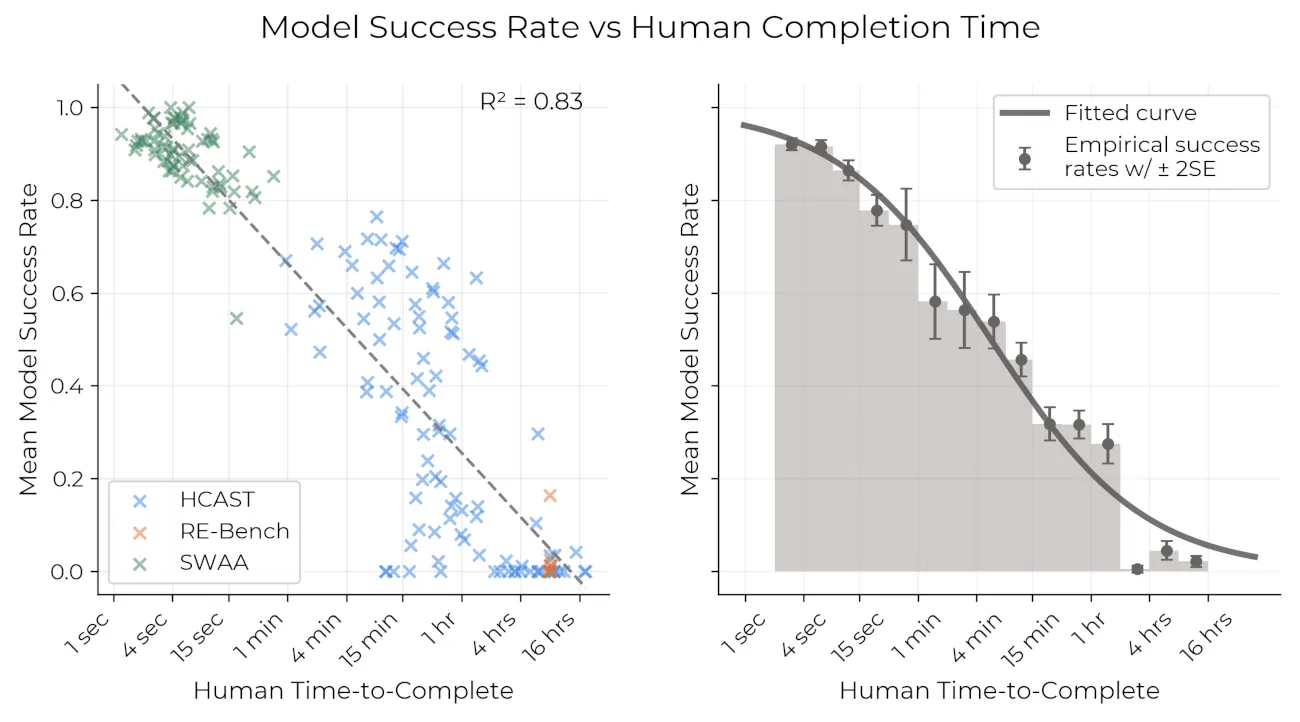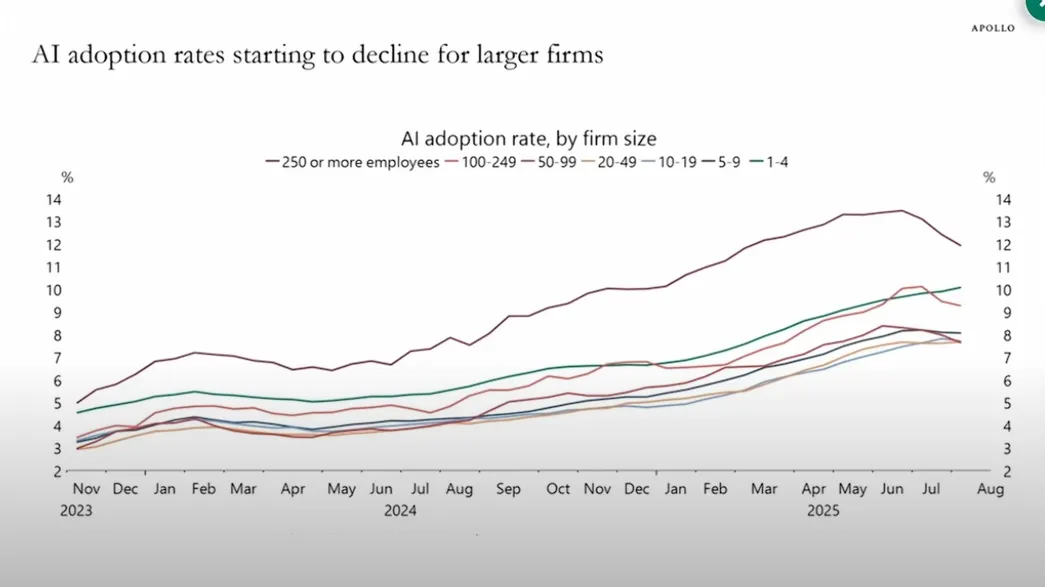Don’t Buy into the AI Hype
Originally titled “Don’t Be a Bizdiot with AI.”
Introduction
Usually we talk about healthcare and health insurance, but today is a little different. I was driving to an appointment last week and heard Medical Matchmaking on NPR’s RadioLab. The medical doctor being interviewed has configured an Artificial Intelligence to suggest drugs for non-standard uses. Today we are going to discuss why this is not a valid use of resources and why this kind of thinking is causing a “bubble” in the market and why this bubble is close to bursting.
Medical Matchmaking
While this “medical matchmaking” sounds like a great idea on the surface, it is actually a complete waste of resources and just playing into the AI hype that is gripping this economy and that will cause an economic collapse when the general populace finally figures out how limited the use for AI is. Here is the description of the broadcast from Radiolab:
“As he finished his medical school exam, David Fajgenbaum felt off. He walked down to the ER and checked himself in. Soon he was in the ICU with multiple organ failure. The only drug for his condition didn’t work. He had months to live, if that. If he was going to survive, he was going to have to find his own cure. Miraculously, he pulled it off in the nick of time. From that ordeal, he realized that our system of discovering and approving drugs is far from perfect, and that he might be able to use AI to find dozens, hundreds, even thousands of cures, hidden in plain sight, for as-yet untreatable diseases.”
That sounds positively miraculous, particularly when you figure out that David is sitting right there with the interviewer, so clearly his research worked. Let’s dig in and find out why this is really a waste of time and money.
What is Medical Matchmaking?
Dr.Fajgenbaum used AI to suggest alternative drug treatments for any ailment. Since Dr. Fajgenbaum has zero grounding in technology, and why would a medical doctor, he didn’t understand any form of solution other than to listen to the hype of AI and go off and try his own thing. Let’s think about the things that had to happen to return a list of ailments and associated non-standard drug treatments.
- Trillions of dollars of research and development into Machine Learning.
- Trillions of dollars into training and checking answers for validity
- Trillions of dollars in hardware to run it all on.
- Trillions into new datacenters to run the new hardware in
- Billions per month into electricity to run the data centers
- Trillions in opportunity cost paying people to play with “AI” when they could be doing something productive.
The Result
What Dr. Fajgenbaum got out of all this massive, monumental effort was a list of alternative treatments that are associated with a list of diagnoses.
So what? It worked didn’t it?
Maybe it did and maybe it didn’t. I didn’t see the list, so I don’t know. What I can tell you is that I personally have a database server that I run for about $50 a month that has a copy of the Unified Medical Language System (UMLS) on it that has lists of procedures and lists of drugs on it, and I could have given him a cartesian product of every diagnosis and associated them with every legal drug treatment in the US. I had this just laying around and could have written the code for him in about four minutes.
Why this Matters
Look at the list of six things costing trillions and trillions of dollars that had to happen for Dr. Fajgenbaum to run his little experiment. Look at all the wasted time and money associated with making that little list. Look at his personal time. Look at the time NPR spent reporting this “modern medical miracle.” All he had to do was ask some propeller headed geek for four minutes of his or her time and that could have all been avoided. Unless you are a propeller headed geek like I am, you simply don’t have the knowledge to know what is possible without going to the tell-you-what-you-want-to-hear AI.
On May 28, 2025 I published an article entitled “17 Reasons Why We Can’t Have AI.” Point 3 is that automating any task is “Faster and Cheaper with Code.” In this case we are talking about a large percentage of the global product, plus millions of people and billions of man hours to do something I could have done in four minutes.
This is the fallacy that makes AI more than useless. You, all of you, don’t have the background to do the work necessary and now AI has given you a portal into this world and you are excited beyond belief. It is, however, a stupendous waste of resources.
The Crash is Coming
We will never get our money out of this AI bubble. Many, maybe even most, US companies are investing heavily into Large Language Models (LLMs), and exactly like Dr. Fajgenbaum above, they have zero idea what they are investing in. We know this because if they did they would take a more conservative, wait and see approach. My nearly inescapable suspicion is that these AI initiatives will never turn a profit. I have spent an entire career ignoring the hype of the latest JavaScript library, and things like Big Data and BlockChain. These are all solutions looking for a problem, exactly like AI and with the same hype. How much money did your company spend in the dot com bubble? How many Javascript libraries have your company worked with in the past decade? How hard is it to find a Vue or a Laravel guy anymore? How much did you spend on Big Data and where are your market insights today? How exactly are you using blockchain in your everyday operations? Thank you to Sabine Hossenfelder for her help on this article
Here are a few observations pointing to the bursting of the AI bubble:
AI Adoption Rates are Declining.
The Massachusetts Institute of Technology (MIT’s) Networked Agents and Decentralized Architecture (NANDA) report stating that
“95% of organizations are getting zero return” on AI initiatives.
A recent report from QuantumBlack AI by McKinsey titled “Seizing the agentic AI advantage” published June 13, 2025 found
“...eight in ten companies have deployed gen AI in some form, but roughly the same percentage report no material impact on earnings. We call this the ‘gen AI paradox.’”
Use Cases are Evaporating
The best use case for AI, coding, is not living up to expectations. There are many reasons for this as alluded to previously. First, actually writing the code is always cheaper, faster and better. Second, there are no examples of architecture that AI can access to base an application on. Sure there are point solutions like “how to write data to a database,” but what is the structure of the database, what is the best pattern to use and why? That information is locked up in an architect’s wetware. Even when someone like Phil Calçado talks about his Backend For Frontend (BFF) pattern, as much of the explanation is in pictures as in words and that really doesn't explain WHEN to use the technique. The Model Evaluation and Threat Research (METR) organization stated in their paper “Measuring AI Ability to Complete Long Tasks” that
“We find that the time taken by human experts is strongly predictive of model success on a given task: current models have almost 100% success rate on tasks taking humans less than 4 minutes, but succeed <10% of the time on tasks taking more than around 4 hours.”
We find this fits with our “point solution” argument previously.
Signs of an Overinvestment Correction
Most of the investment that has driven AI (and the hardware it is run on) has come from big tech companies like Meta, Google and Amazon. Goldman Sachs predicts that investments in AI from the big tech companies has to stop.
Bubble Talk and Investor Retreat
Even the snake oil salesman Sam Altman of OpenAI says we are in an AI Bubble. “Someone is going to get burned,” Altman said in an interview with The Verge. Yes, he is talking about YOU.
From News.com.au after removing all AI stocks from his portfolio:
“Martin Eftimoski, an AI researcher at the University of New South Wales and former economist at the RBA, is worried that the more than $150 billion that big tech spent on Artificial Intelligence this year won’t yield the promised results.”
“I don’t think the majority of businesses understand how to employ AI, and I don’t think the majority of managers understand what it is,” he said.”
“The business excitement around LLMs is far greater than the actual usefulness. Look at it from a personal perspective: have you ever been lied to by ChatGPT?”
AI is Hitting Physical Limits on Hardware and Power
Goldman Sachs says that Data Center vacancy rates sit at an all time low of 3%, and 0% in most sought-after markets. This will cause prices to increase and newcomers won’t be able to train their new AI models.
Conclusions
I want AI to be real as much as anyone else, but it just isn’t. We’ve shown five signs of the impending AI crash and we told of a wholly incorrect use of AI in our opening vignette.
The irony isn’t lost that some of you are probably watching this on Sentia’s YouTube channel where we generated the voice over and the lip-synch with AI. Some time this week I am going to do the research on using AI as a front line help desk. Think about the series “The IT Crowd” with their answering machine that took incoming calls and stated “Have you tried turning off and then turning it on again?” Same thing.
We aren’t saying that there aren’t uses for AI. AI is the thing that helped researchers to the path to decoding the human genome in the early part of this century. I think there are uses in materials science, as well.
AI, however, is useless and worse than useless in nearly all cases, as we discovered with our opening vignette about having AI create us a cartesian product from diagnoses and drugs.
If you liked what you read, please like and subscribe, click on the notification icon, subscribe to our newsletter, and follow us on all our social media and blog sites.
If you have comments, contact us here, on our site, SentiaHealth.com, our parent company SentiaSystems.com, or send us an email to info@sentiasystems.com or info@sentiahealth.com.
Comment
| Date Written | Comment |
|---|


